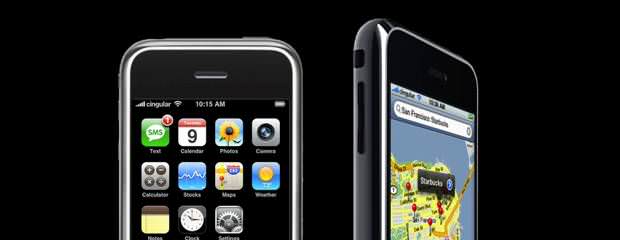
What's Good for Verizon and AT&T is Terrible
Imagine having just two companies selling salt, or blue jeans, or light fixtures. That couldn’t happen, because it’s relatively easy for a new competitor to manufacture those products and make a modest profit. Nevertheless it can happen in the wireless world, because these two carriers have built enormous moats protecting their businesses: They have vastly greater access to capital, airwaves, and towers as so then as vastly greater numbers of subscribers than the two stragglers on the national scene, Sprint and T-Mobile.
The Apple FaceTime/AT&T story
Consider the Apple FaceTime/AT&T story. AT&T has a number of problems: Voice calls and texting services account for the vast majority of its wireless earnings and all of its profits. The carrier charges extraordinary amounts per megabyte for this stuff, however users are spending less of their time on these legacy services. Instead, users are eating up mountains of data. Yet users aren’t interested in paying a lot for data, and expect charges per megabyte that are far lower than charges for texting. Users on the whole want to connect and communicate to other human beings more than anything, in short they’re finding data substitutes for voice and text.
The resulting explosion in data use is too much for AT&T’s physical network to stand, nevertheless AT&T doesn’t want to invest more in this network than it thoroughly has to. It needs to keep its stock price up by paying rich dividends and buying back stock; building many more towers and connecting all of them to fiber would bring down the value of its shares.
The same time with overage charges
If you put shared data plans at the same time with overage charges, you’ve got the power to make users worry about each additional application they use - will it push them over their data limit? This enforces scarcity, keeping usage down and prices up. Presto: Capital expenditures in network hardware can stay low, and “pricing discipline” can keep profits high.
Charging a separate fee for use of FaceTime over its cellular networks, as AT&T will now have the power to do with the new iPhone and iOS 6, is a natural outgrowth of all this. Now that it’s clear that users are paying for buckets of bits, everything they do can be either inside those buckets or just in case to them - in short subject to an additional charge. No competitive pressure will drive AT&T to decide whether or not FaceTime should be allowed to be inside the bucket; this is a business decision in other words within the carrier’s control. Previously iOS 6, FaceTime was Wi-Fi only; Apple was avoiding the power of the carriers. Now Apple, likely to make up for it for some other concessions from the carriers in connections with its devices, is joining in.
Apple has a history of deferring to carriers when it is interested in broader distribution for its devices. When Apple replied to the 2009 FCC inquiry as to its relationship with AT&T, Apple stated:
"There is a provision in Apple's agreement with AT&T that obligates Apple not to include functionality in any Apple phone that enables a customer to use AT&T's cellular network service to originate or terminate a VoIP (Voice over Internet Protocol) session without obtaining AT&T's permission. Apple honors this obligation, to boot to respecting AT&T's customer Terms of Service, which, for instance, prohibit an AT&T customer from using AT&T's cellular service to redirect a TV signal to an iPhone."
It’s unlikely that Apple itself will be paying in any way for FaceTime to reach AT&T subscribers; Apple is too valuable to AT&T. Nevertheless Apple will share in the fees paid by AT&T’s 100 million-plus users for the privilege of using FaceTime. In the meantime, as well-ran Sprint is stuck with buying about 30.5 million iPhones from Apple over the at once four years and paying $500 to subsidize each phone. So Sprint will continue, and continue to struggle, both states that are useful for AT&T and Verizon.
We should be talking about fiber networks that enable rich clouds of nomadic connectivity and commodity devices that can access those networks and any content or application they want. Wireless policy is fiber policy, and abundant network capacity should be our common goal. Instead, we’re navigating through a thicket of press releases this summer that all signal the carriers’ power to charge whatever they like for uses of their platform by everyone involved. The bottom line could not be clearer: AT&T and Verizon plan to get even bigger in 2012, and users will pay in the end.
- ·
Allvoipnews
- ·
Ios 6 Voip
- ·
Verizon Att Subscribers 2012
- ·
Whats A Good Voip For Iphone
- · Rackspace debuts OpenStack cloud servers
- · America's broadband adoption challenges
- · EPAM Systems Leverages the Cloud to Enhance Its Global Delivery Model With Nimbula Director
- · Telcom & Data intros emergency VOIP phones
- · Lorton Data Announces Partnership with Krengeltech Through A-Qua⢠Integration into DocuMailer
